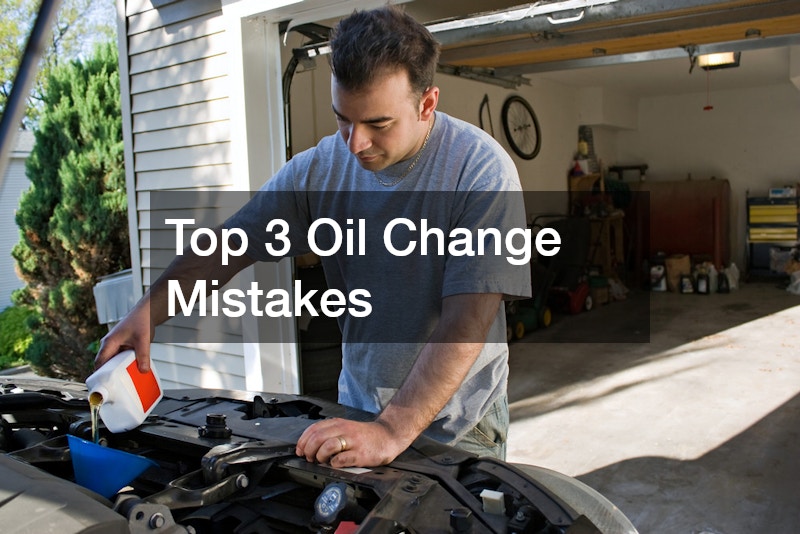Oil changes are a critical aspect of vehicle maintenance, yet many drivers unknowingly make common errors that can lead to engine issues. This article explores the top three oil change mistakes and how to avoid them, ensuring your vehicle runs smoothly and efficiently.
1. Using the Wrong Type of Oil
Understanding Oil Viscosity
The correct oil viscosity is crucial for maintaining engine health because it ensures the oil can provide adequate lubrication under varying temperatures. Understanding the specifications indicated on motor oil packaging is essential to selecting the right oil for your vehicle’s needs.
Oil viscosity tends to change with temperature, where it becomes thinner in high temperatures and thicker in low ones. Choosing an oil with the wrong viscosity can lead to reduced lubrication efficiency, which can escalate to increased engine wear over time.
Drivers should always consult their vehicle’s manual to find the recommended viscosity rating for their specific model. A lack of adherence to these guidelines can leave the engine vulnerable to damage and reduce its overall longevity.
Impact of Using Synthetic vs. Conventional Oil
Synthetic oils are engineered to provide better performance under extreme conditions compared to conventional oils. Using the correct type of oil can significantly enhance your vehicle’s performance and extend engine life.
Conversely, utilizing the wrong type of oil, such as conventional when synthetic is recommended, can lead to reduced engine efficiency and may even void vehicle warranties. Evaluating your driving habits and manufacturer recommendations can help dictate the best choice between synthetic and conventional oils.
As synthetic oils frequently offer extended oil change intervals, they might be more cost-effective in the long run, despite their higher upfront cost. Awareness of these differences can prevent future engine issues and enhance overall vehicle reliability.
2. Not Changing the Oil Filter
Why Oil Filter Replacement is Necessary
The oil filter plays a vital role in maintaining engine cleanliness by trapping contaminants before they can circulate and cause engine wear. Replacing the oil filter at every oil change is essential to ensure that these impurities are removed effectively.
The importance of a clean oil filter cannot be overstated, as it contributes significantly to preserving the engine’s efficiency and health. Skipping this step can lead to accumulations that hinder oil flow and reduce lubrication quality.
Routine oil filter replacements help maintain optimal oil flow and pressure levels, facilitating the prolonged performance of your motor. Consistent maintenance prevents potential mechanical failures that stem from neglecting this critical component.
Consequences of a Clogged Oil Filter
A clogged oil filter can result in symptoms such as engine overheating, decreased power, or even sudden breakdowns. Identifying these issues early is key to avoiding costly engine repairs.
Driving with a clogged or outdated oil filter often leads to increased engine friction, causing parts to wear out faster than intended. The damage can sometimes be irreversible if left unaddressed for extended periods, leading to expensive solutions and replacements.
Maintaining vigilance about the condition of your oil filter ensures that your engine remains free from contaminants. Proactive measures in replacing the oil filter effectively safeguard against significant mechanical issues and extend the operational life of the engine.
3. Overfilling or Underfilling the Oil
Dangers of Overfilling the Oil
Overfilling engine oil can lead to increased pressure within the engine, prompting potential leaks or gasket failures. This condition creates complications such as foaming that hinders proper lubrication and engine cooling.
Accurate oil level checks are essential, as visually assessing the dipstick is the most reliable method. Overfilling can lead to irreversible engine injuries and impact vehicle performance substantially.
Staying informed about oil level guidelines assists in preventing adverse effects from overfilling. Maintaining optimal oil volume in your vehicle is crucial for avoiding excessive pressure-related challenges.
Risks of Insufficient Oil Quantity
Running your engine with insufficient oil exposes it to heightened friction and heat, accelerating wear and tear on essential components. Ensuring the correct oil level is maintained helps avert the risk of engine seizing or failing prematurely.
Monitoring your engine’s oil level regularly is imperative, especially after each oil change, to make sure the levels meet the manufacturer’s specifications. Neglecting the appropriate oil volume could compromise engine longevity and necessitate costly repairs.
Consistency in monitoring oil levels after changes acts as a preventive measure against severe engine issues. By adhering to these standards, drivers can ensure seamless vehicle operations and mitigate the risks associated with poor oil management.
By avoiding these common oil change mistakes, you can enhance your vehicle’s performance, extend engine life, and prevent costly repairs. Regular maintenance and awareness of these pitfalls will ensure your car remains in top condition.











